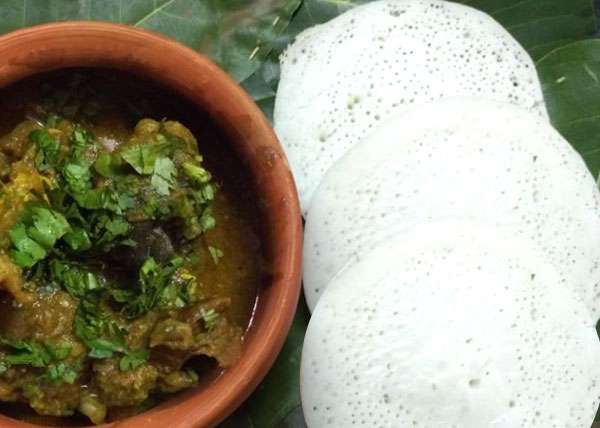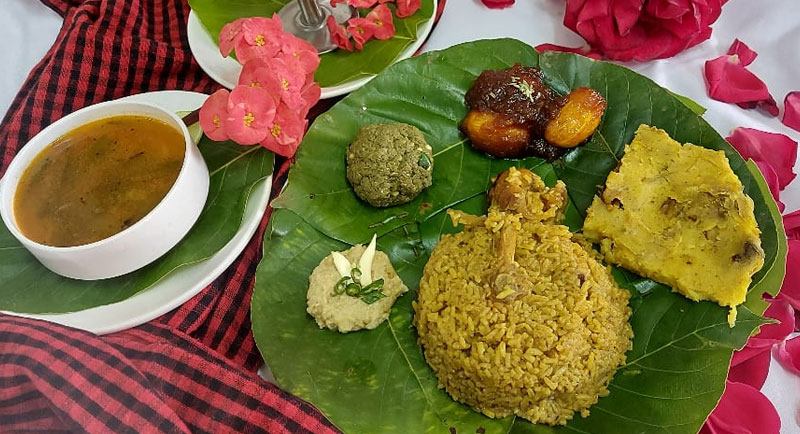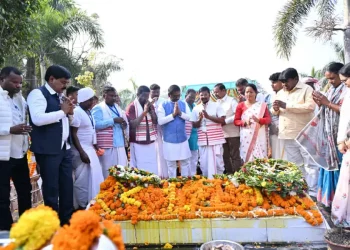Jharkhand can lay out quite a banquet, considering that its 32 tribes have different food habits and customs. Season this with a liberal sprinkling of the influence of neighbouring States, and you have a buffet like no other.
Various dishes popular in the State are also easy on the stomach. Maize, Millets and Horse Gram are widely used.
Rajneesh Kumar, Assistant Lecturer at the Institute of Hotel Management, Ranchi, points out that certain leafy vegetables are found only in and around Jharkhand. These are known for their high nutritious values and are invaluable for the Jharkhandi platter.
Maize, millets, scores of saag, bamboo shoots and horse gram nourish Jharkhandis in their daily meals


Saag
Saag, or edible leaves, does not merely comprise the vegetable section of a meal but can be dried and stored to be used all through the year as chutneys. The likes of Gandhari, Ganundi, Matha, Koinar, Putkal, Kurdum, Khapra, chakodh, beng, amti and poi saag are used variously, being rich sources of calcium, magnesium, iron, potassium and vitamins.
The recipes are mouth-watering. Boiled Mahua (Madhuca Longifolia) is served with roasted tomato chutney as Bhappal, millet flour roti partners Beng Saag Chutney and Sanai Saag makes a fine bharta.
Pickles, which add flavour and help in digestion, can be made of ingredients as diverse as red ants and bamboo shoots.
During the Tusu festival, Khapra Roti is cooked on earthenware and eaten with mutton slow-cooked in an earthen pot with less oil and spices. It’s a favourite of Oraons and Mahtos in particular. Tribals also often roast fish and chicken wrapped in fragrant leaves.

The dessert, of course, is sacrosanct in India and Jharkhand is no different. There’s the Malpua, famous across India and mainly prepared during Holi in Jharkhand. There’s fried Arsha Roti, made from jaggery and rice flour. Traditional Balushahi and jaggery laddus made of sesame seeds, peanuts and muri (puffed rice) complete the array of delicacies.




















